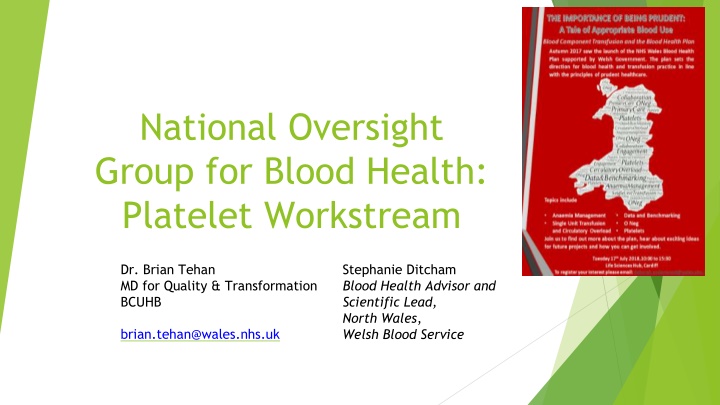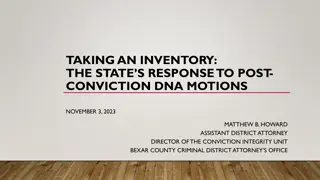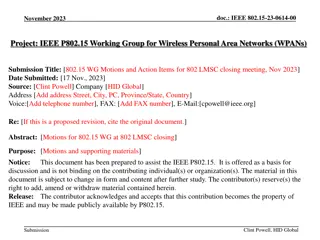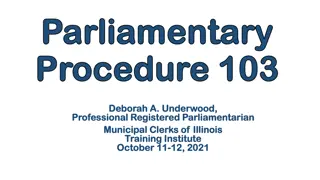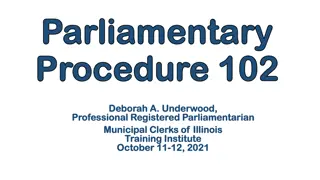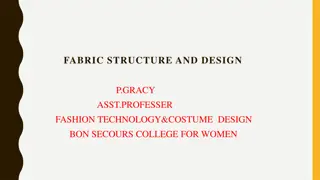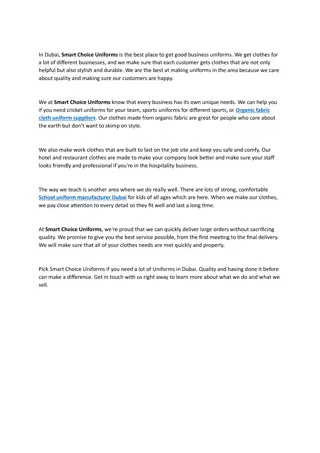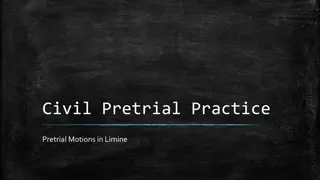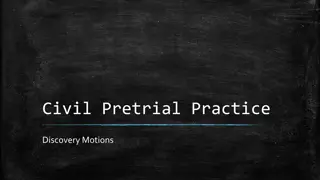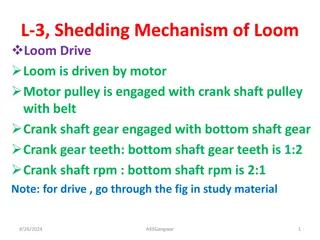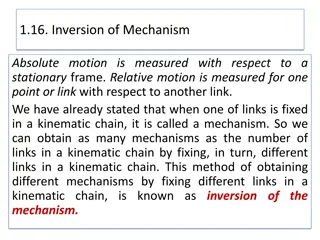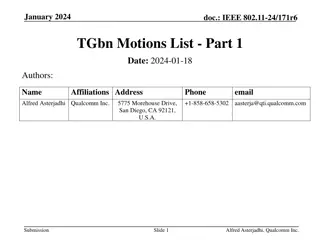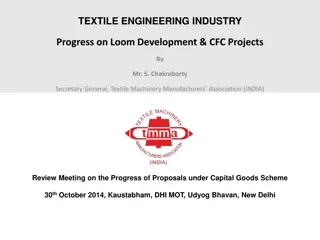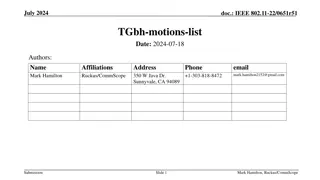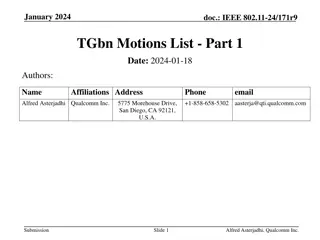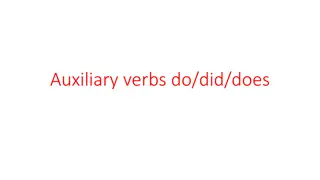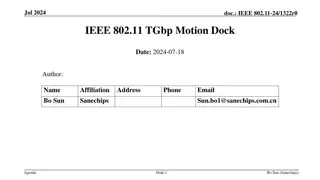Auxiliary Motions of Loom: Essential Features for Quality Cloth Production
In the textile industry, auxiliary motions play a crucial role in ensuring high productivity and quality of cloth. These motions, such as warp stop motion, weft replenishment motion, and brake motion, are vital for preventing damage and maintaining seamless operation on the loom. Learn about the different types of auxiliary motions and their functions in this comprehensive guide.
Download Presentation

Please find below an Image/Link to download the presentation.
The content on the website is provided AS IS for your information and personal use only. It may not be sold, licensed, or shared on other websites without obtaining consent from the author.If you encounter any issues during the download, it is possible that the publisher has removed the file from their server.
You are allowed to download the files provided on this website for personal or commercial use, subject to the condition that they are used lawfully. All files are the property of their respective owners.
The content on the website is provided AS IS for your information and personal use only. It may not be sold, licensed, or shared on other websites without obtaining consent from the author.
E N D
Presentation Transcript
National Oversight Group for Blood Health: Platelet Workstream Dr. Brian Tehan MD for Quality & Transformation BCUHB Stephanie Ditcham Blood Health Advisor and Scientific Lead, North Wales, Welsh Blood Service brian.tehan@wales.nhs.uk
Background There is consistently increasing demand for Platelets Donor supply is dropping - 35% from 2000 to 2015 (NHS Blood and Transplant data) Wastage is also an issue Providing the constant supply of pooled platelets is a heavy burden on WBS potentially to the detriment of production of other components. Current BSH Guidelines for the use of platelet transfusions (2016) British Journal of Haematology, 2017, 176, 365-394 are available Inappropriate requesting is a concern -28% use outside guidelines (Estcourt, et al 2012). The majority of platelets (67%) are requested for the management of patients with haematological malignancies.
The Problem To ensure sustainability long term, we need to ensure an adequate supply, minimise wastage and ensure prudent use through application of best practice guidelines
Current Condition NHSBT Audit 2017- only 28% had a policy in line with current guidelines 2017 data revealed average wastage across Welsh Hospitals 11%, but high degree of variation between hospitals Hospital Platelet Issues and Wastage 2017 4000 3500 3000 2500 Total Units 2000 Platelet issues 1500 Platelet wastage 1000 500 0 1 2 3 4 5 6 7 8 9 10 11 12 13 14 15 16 17 18 Hospital
So what will the group try to achieve? Review of the platelet supply chain To achieve 100% compliance with the 2016 BSH Guideline for Platelet Transfusion To significantly reduce platelet wastage within hospitals
Options Do Nothing Current condition is not sustainable Ambient hold will increase whole blood pool Increase supply Improve Efficiency of Platelets 7 day platelets Compliance to Best Practice Guidelines & improved local platelet management Reduce Demand
POTENTIAL BARRIERS Resistance by local clinicians Organisations fail to comply in a timely manner Difficulty implementing change within timescale
FOLLOW-UP: Plan Actual Monitor Issue and Wastage data pre/post implementation of change. Use PDSA cycles in local projects to create best practice that can be rolled out to other areas/Trusts.
IMPLEMENTATION PLAN: Action Responsibility Deadline NOGBH approve proposal NOGBH 27/06/2018 Identify Key Stakeholders within each organisation Develop communication strategy as appropriate to engage those stakeholders Inform key stakeholders of the existence of guidelines and necessity of their adherence Ask primary stakeholders to engage Haematologist/transfusion practitioners to locally champion these proposals Discuss issue with key stakeholders to determine Root Cause of issues in hot spots and develop local plan Steph Ditcham (WBS) Nicola Polley (BCUHB), Emma Hall (BCUHB) Brian Tehan Hospital directors Cancer/ Cardiac/ Critical Care Build into new LIMS (LINC) Establish metrics to track organisational compliance within guidelines Develop template for ordering platelets which steers compliance with guidelines ( Nudge ) Ensure compliance measures are formally supervised through organisational governance mechanisms and boards are assured.
Thankyou Dr. Brian Tehan MD for Quality & Transformation BCUHB Stephanie Ditcham Blood Health Advisor and Scientific Lead, North Wales, Welsh Blood Service brian.tehan@wales.nhs.uk
